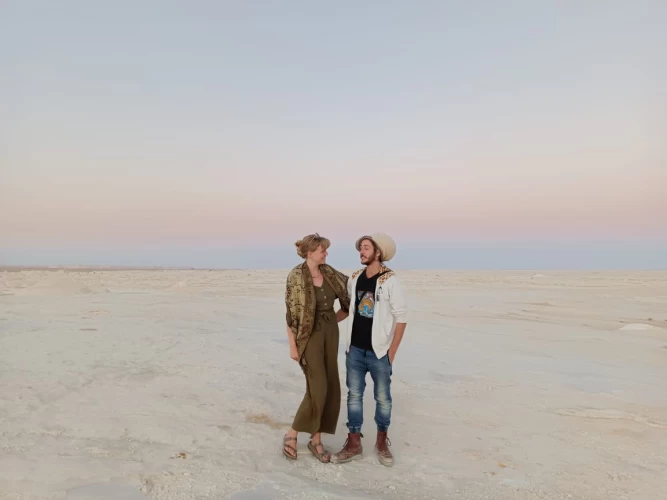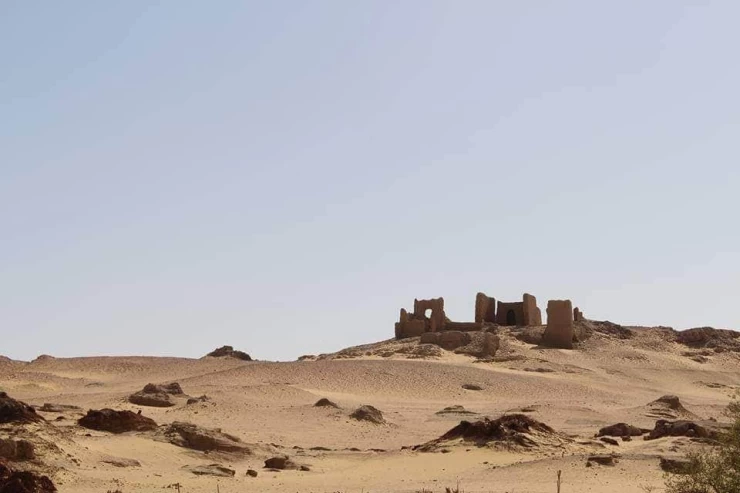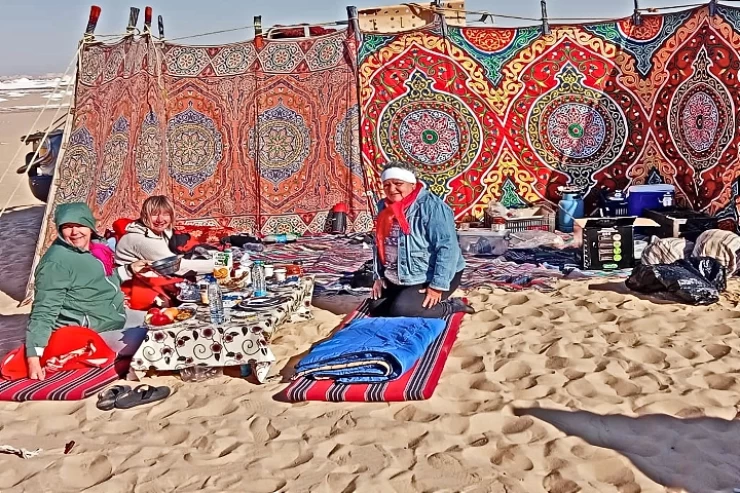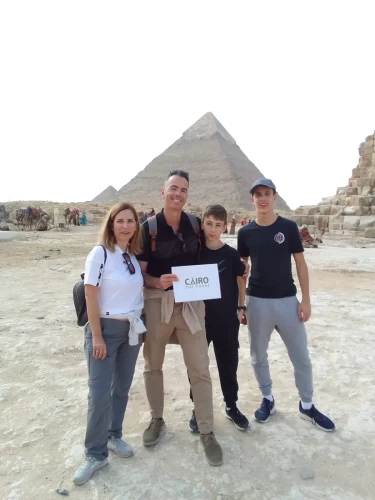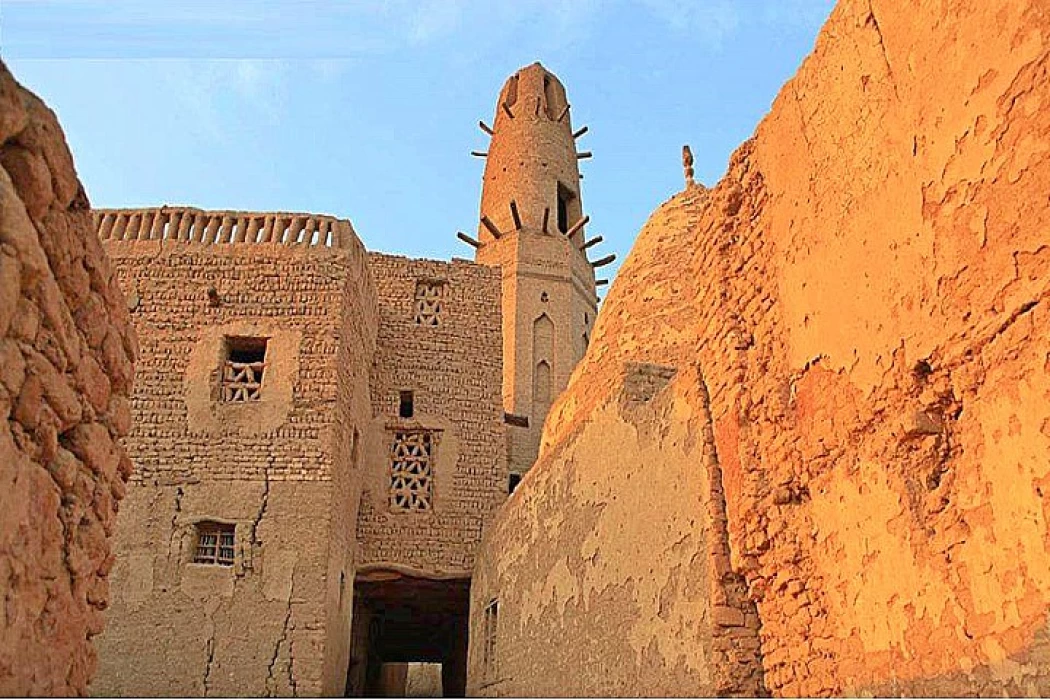
El Dakhla Oasis
Entre los oasis egipcios se encuentra entre el oasis de Farafra y el oasis de Kharga y se encuentra dentro de la gobernación de Nuevo Valley. El Oasis se puede visitar en cualquier época del año, pero es mejor visitarlo en invierno para disfrutar del sol templado y brillante, es uno de los siete oasis en el desierto occidental de Egipto que se encuentra a 350 km del Nilo. Es el oasis más meridional de Egipto y se encuentra históricamente en el centro de una importante ruta comercial de caravanas que unía el Dakhla no solo con los oasis de Kharga y Farafra, sino también con el valle del Nilo en el oeste y tan al este como Libia . Más de la mitad de las tierras del Dakhla Oasis se cultivan de forma agrícola. Esto se debe a que Dakhla Oasis es rico en una gran cantidad de manantiales como "Bir Talata" (pozo número tres) y "Bir El Gabal" (el pozo de la montaña). Estas fuentes de agua dulce se han convertido en las atracciones turísticas más populares en el Oasis de Dakhla debido a su maravillosa agua cálida y su atmósfera relajante.
La historia humana de este oasis comenzó durante el Pleistoceno, cuando tribus nómadas se asentaron a veces allí, en una época en que el clima del Sahara era más húmedo y donde los humanos podían tener acceso a lagos y marismas. Pero hace unos 6.000 años, todo el Sáhara se volvió más seco, transformándose progresivamente en un desierto hiperárido (con menos de 50 mm de lluvia al año). Sin embargo, los especialistas piensan que los cazadores-recolectores nómadas comenzaron a asentarse casi permanentemente en el oasis de Dakhleh en el período del Holoceno (hace unos 12.000 años), durante nuevos, pero raros episodios de épocas más húmedas.
De hecho, el clima más seco no significó que hubiera más agua que hoy en lo que ahora se conoce como el Desierto Occidental. El sur del desierto líbico tiene el suministro de agua subterránea más importante del mundo a través del acuífero nubio, y los primeros habitantes del Oasis de Dajla tenían acceso a fuentes de agua superficial. En el tercer milenio a. C. vivía aquí la gente probablemente nómada de la cultura Sheikh Muftah. Podemos confirmar a través de nuestra empresa Cairo Top Tours, que el turismo en Egipto será fascinante y agradable.
The essence of El Dakhla Oasis is deep in the Western Desert of Egypt. This place has an oasis that is a picturesque paradise integrated into history, nature, and silence. It has verdant expanses in an arid scenery, making it a concealed treasure worth discovering. To an adventurous spirit, a historical sucker, or just someone looking for a quiet place to recharge, this oasis has it all.
El Dakhla Oasis presents an unusual combination of golden dunes, green fields, and natural hot springs. The beauty is complemented with palm groves and gardens flourishing in the heart of the desert. Dip into Bir Al-Gebel, a hot water spring famed for its healing potentials, or enjoy swimming in the fresh pools of Ain Al-Kasr. Places as quiet as these offer an ultimate rejuvenation experience.
Dakhla Oasis is taken into account as one of the most attractive oases in Egypt. within the oasis, there are quite five hundred thermal springs like those of Bir Tarfawi and Bir Al-Gebel, in addition to charming adobe homes and ruins of the medieval era of the cities of Al-Qasr and Balat.
Dakhla is organized around the main city, Mut, a town that dates back to swayer times and is named after goddess Mut, the consort of god Amun-Re. Though mutton has evolved to become a contemporary traveler dominion, these days you'll still see remains of the previous city.
Dakhla will hardly be thought of as one unit. It's rather a series of tiny cities and hamlets scattered on the road; however, it offers the foremost lovely landscapes and also the most exceptional views of all the oases of the western desert. Plantations of olives, oranges, and dates are interspersed with sand dunes on the road. The localities of the oasis shelter the majority of fascinating remains, just like the Tombs of Al-Muzawaka, which date from the swayer amount, or Al-Qasr, a charming medieval town, product of clay bricks, a number of those buildings initiate the tenth century. It's a true maze of slender streets and secret passages. engineered at the foot of rock cliffs, and it is the example of the medieval Islamic town dominated by the place of worship, Nasr el-Din, a high tower covered in rough logs akin to the minarets of mosques in a geographic region. In Al-Qasr, the tower is constructed within the Ayyubid vogue (1171-1250).







